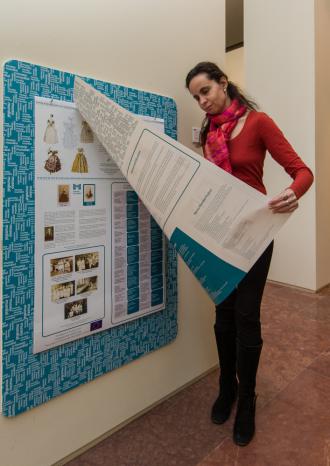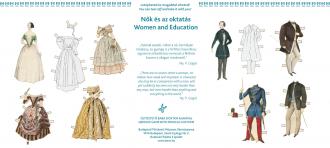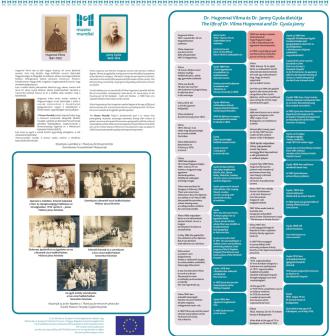Hogyan készül - lépésről lépésre
1st Step:
Choose object and topic
One of the most popular thematic units at the permanent exhibition which presents the history of Budapest is called „Housing”. The civil room shows the furniture that remained from Dr. Gyula Janny, a very successful doctor of the 19th Century. From the tableaus of the exhibition, we can get several information about him. However there isn’t a lot of data available about his family who also lived at this place. Furthermore, a woman doctor of this time was Vilma Hugonnai, who fought for Hungarian women to be able to attend universities. The intention to arrange the exhibition in a personal way and also related to the situation of women came true.
2nd Step:
Check technical preconditions
At this exhibition there is not a lot of space available, but the material, which can be torn off, was disposed very well, near the tableau of Janny. We wanted to place an interactive unit at this station, so people would want to take it with them. That is how the material from the museum’s antique collection was born: the paper dress up game presenting a man and a woman from the 19th century, where both of the genders could wear professional clothing from the medical field.
It was important that the installation could handle the weight of the paper and that it was easily torn off without taking the wall off.
3rd Step:
Cost estimates
Once we decided on the size and surface in accordance to the content, most of the cost was absorbed by the manufacturing (printing). There were significant differences between printing quotas.
4th Step:
Create content
We wanted to create something that makes the visitor think. The source of the game was provided by other collections’ material. Our professional colleagues’ brainstorming resulted in the timeline, but it is difficult to interpret for some visitors. In this case, the content should be tested by someone who is not involved. However, the content was checked by the curator of the exhibition.
5th Step:
Implementation in the museum
Concerning the implementation of the installation in the museum, it is important to find a place from where the exhibition guards can always replace the tear-off pad in case it is empty. In our case, we’ve found a place where it can be done easily.




















